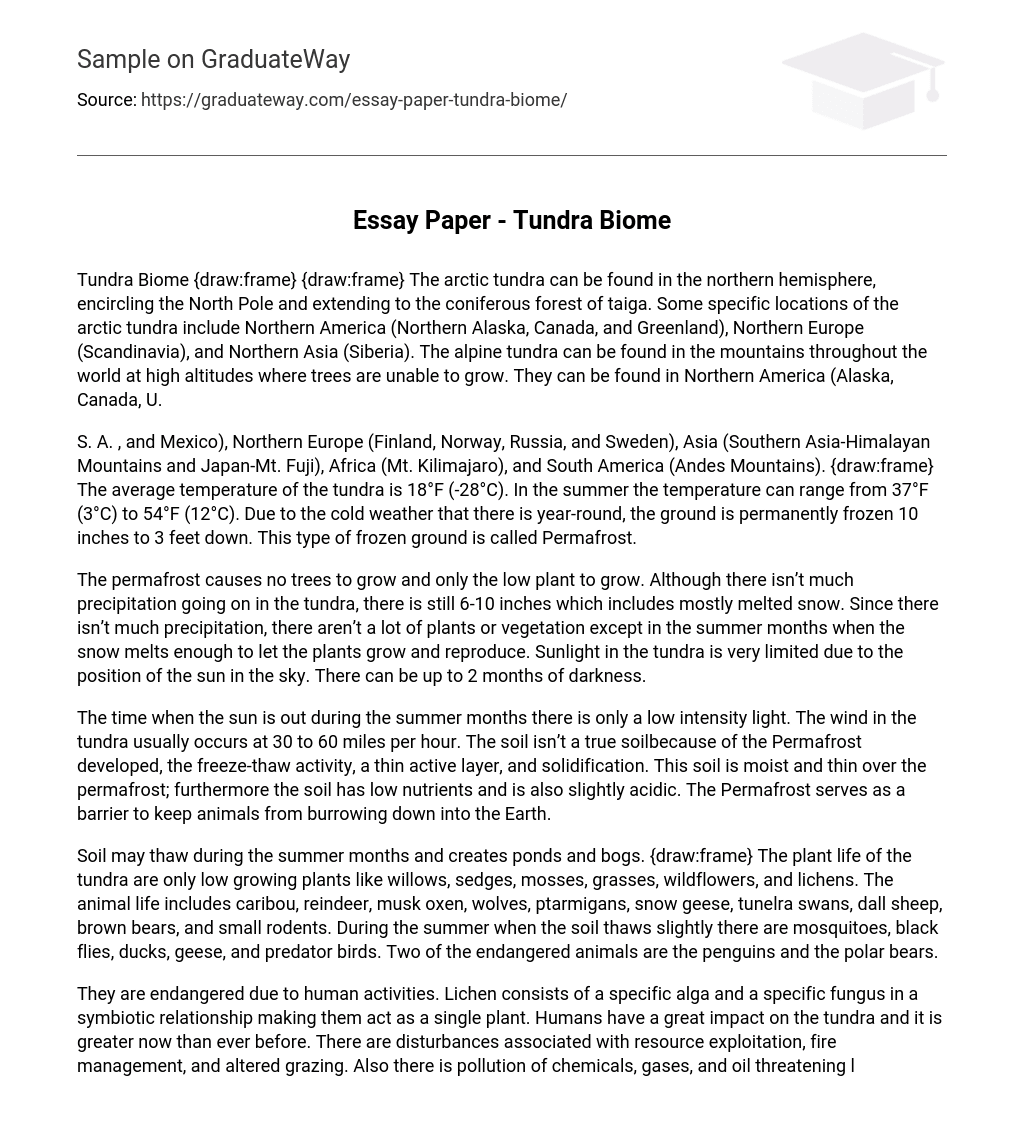The arctic tundra, which stretches from the North Pole to the taiga coniferous forest in the northern hemisphere, can be found in different regions such as Northern America (including Northern Alaska, Canada, and Greenland), Northern Europe (Scandinavia), and Northern Asia (Siberia). In contrast, the alpine tundra is present in mountainous areas around the world at high elevations where trees are unable to grow.
They can be found in Northern America (Alaska, Canada, U. S. A., and Mexico), Northern Europe (Finland, Norway, Russia, and Sweden), Asia (Southern Asia-Himalayan Mountains and Japan-Mt. Fuji), Africa (Mt. Kilimajaro), and South America (Andes Mountains).
{draw:frame} The tundra has an average temperature of 18°F (-28°C). During the summer months, temperatures can range from 37°F (3°C) to 54°F (12°C). The ground in this region remains permanently frozen at depths ranging from 10 inches to 3 feet due to the consistently cold weather. This type of frozen ground is known as Permafrost.
The tundra lacks trees and has short plants because of the permafrost. Vegetation is limited in this area due to low precipitation levels, typically 6-10 inches in melted snow form. However, during summer, plants can thrive and reproduce. The sun’s position in the sky restricts sunlight exposure in the tundra, sometimes resulting in a two-month period of darkness.
During the summer months, the sun emits a low intensity light while the wind on the tundra blows at speeds ranging from 30 to 60 miles per hour. The soil on the tundra is not considered true soil because of factors such as Permafrost presence, freeze-thaw activity, solidification, and a thin active layer. This soil is moist and thin above the permafrost with low nutrient levels and slight acidity. Animals are unable to dig into the ground due to the barrier formed by Permafrost.
In the summer, ponds and bogs are formed as the tundra thaws. The plant life in this region consists of low-growing vegetation, which includes willows, sedges, mosses, grasses, wildflowers, and lichens. A variety of animal species can be found inhabiting the tundra such as caribou, reindeer, musk oxen, wolves, ptarmigans,snow geese,tundra swans,dall sheep,brown bears,and small rodents. Mosquitoes , black flies , ducks , geese and predatory birds can also be found in the partially thawed soil during summer. Additionally,penguins and polar bears – endangered animals- reside in the tundra.
Human activities pose a significant threat to the tundra, particularly impacting lichen – a distinctive plant formed by the collaboration of an alga and fungus. Currently, human influence on the tundra exceeds historical levels. Exploitation of resources, fire management practices, alterations in grazing patterns, and pollution from chemicals, gases, and oil all contribute to disturbances that jeopardize life. As a result, it is evident that humans primarily have detrimental effects on the tundra.
Both humans and the tundra have reciprocal impacts on each other and the global economy. The tundra has inspired movies such as Ice Age, Madagascar, Snow Dogs, 8 Below, White Fang, and Polar Express. Books like Into the Wild and White Fang have also been influenced by this unique environment. However, industrial activities contribute to environmental problems associated with the tundra.
Bibliography
- http://www. ucmp. berkeley. edu/exhibits/biomes/tundra. hp online
- http://www. blueplanetbiomes. org/tundra. htm online
- http://www. cotf. edu/ete/modules/msese/earthsysflr/tundra. html online
- http://www. marietta. edu/~biol/biomes/tundra. htm online
- http://www. radford. edu/~swoodwar/CLASSES/GEOG235/biomes/tundra/tunill. html online
- http://www. ulapland. fi/home/vies/ajankohtaista/kide/Kide4_2000/Forbes. htm online
- http://www. scionline. org/index. php/Category:Arctic_Tundra online Towle, Albert. Modern Biology. Holt, Rinehart, and Winston. Austin, TX. 1999. Pages 425-426





